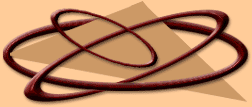Title of Journal
Article__The Doctorate of Physical Therapy: Clinical and Academic Physical
Therapists’’ perception of appropriate curricular changes_____
Title of Journal: Journal of Physical Therapy Education
Volume_____________21(1)_________ Date _Spring_/__2007____ Page Number(s) ___3-13_______
·
What organization
is responsible for publishing the journal you chose?
American
Physical Therapy Association Education Section
·
What is your overall
evaluation of this article?
_____Poor ______Fair ______Good _______Very Good
__X___Excellent
·
Why did you choose
to review this particular article?
This article is
part of the literature review for my thesis. It discusses what areas of content
need to be added to current PT education and the differing degrees to which academic and clinical PTs feel these areas should
be considered in light of the move to the DPT. This would parallel some of my
research for the PTA’s education.
·
How would you rate
this article as a tool for teaching a student about cardiopulmonary physiology, radiography, or another allied health specialty?
Students:
____Poor
____Fair _____Good _____Very Good __X__Excellent
Teachers:
____Poor
____Fair _____Good _____Very Good __X__Excellent
Patients:
____Poor
__X__Fair _____Good _____Very Good ____Excellent
·
Comment on the
readability of this article.
This
article is clearly written for the field of physical therapy and its intended readers are clinical and academic PTs. It is not an article written for a layperson.
PT and PTA educators can use this information to help form and change their current curriculum.
·
Course Topics covered:
Survey, questionnaires, return rate of mailed surveys, statistical significance, Chi square test, cross tabulations,
Likert scale, limitations (APTA members), random selection , sample size, IRB approval
·
Brief Summary:
This article purposes were to (1)"examine what clinical and academic physical therapists think should be added to physical
therapist education curricula in order produce autonomous professional entry level physical therapist graduates as PT
programs make the transition from the entry level master of physical therapy degree to the entry level doctor of physical
therapy degree, (2)identify the changes physical therapist educators are making to the curriucla...and (3) to analyze similarities
and discrepancies between the clinical and academic PTs thinking.”
The article states that both academic and clinical PTs feel that all 12 practice areas listed are important to
add to DPT curriculum. They however somewhat disagree about which areas were
of most importance in that clinical PTs identified all areas as important and academic PTs identified less importance on some
of the areas.
The article does go on to state that this discrepancy my be at least in part to the fact that academic PTs would
be the ones making the changes in the curriculum which would essentially more work load, versus a possible perception that
the items mentioned my be perceived as better taught in the clinical setting.
Nonetheless, there were definite feelings that all areas of specialty be added or expanded in the curriculum.
·
Identify and attempt
to explain three (3) terms, procedures or concepts that were unfamiliar to you when reviewing this article.
I am least
familiar with the process of statistical analysis. In that there are Chi squares. With a quick internet search I have found that “The purpose of Chi square testing
is to determine whether the observed frequencies (counts) markedly differ from the frequencies that we would expect by chance.”
(http://www.statpac.com/statistics-calculator/counts.htm). Honestly beyond this, I am clueless when it comes
to statistical analysis.
I have never
heard of cross tabulations. But, with a quick trip to Wikipedia, I have learned
that “a cross tabulation (often abbreviated as cross tab) displays the
joint distribution of two or more variables.” When I looked at their example, it basically seems like a way to present
information with several variables.
All of the other terms and items I was at least basically knowledgeable about.
I will soon be seeing how involved the IRB process is.
·
Detail the strengths/weaknesses
of this article.
I did not see a weakness in this article. They stated their purpose
clearly. They appeared to have sufficient sampling size with sufficient return
rates. They used statistical analysis to evaluate their findings. They plainly stated their limitations. They offered comment
to future research. This article was current and of true relevance to my profession
and my thesis topic.
·
How might this
article be useful to you in your further studies and career?
I will no doubt use the findings from this article to develop my thesis around the gap between the DPT and the associates
level educated PTA. I can use this information about the 12 areas of interest
to help guide the direction of proposed hypothesis for the PTA’s education.
·
Does the article
include a list of references/citations that can be used to find more information on the topics they cover?
This article had a total of 24 references. Of these, most were from
this decade. Some showed parallels from other health care arenas and their pursuit
of postbaccalaureate level education such as nursing. This seems to be a very
well written scholarly journal article.
